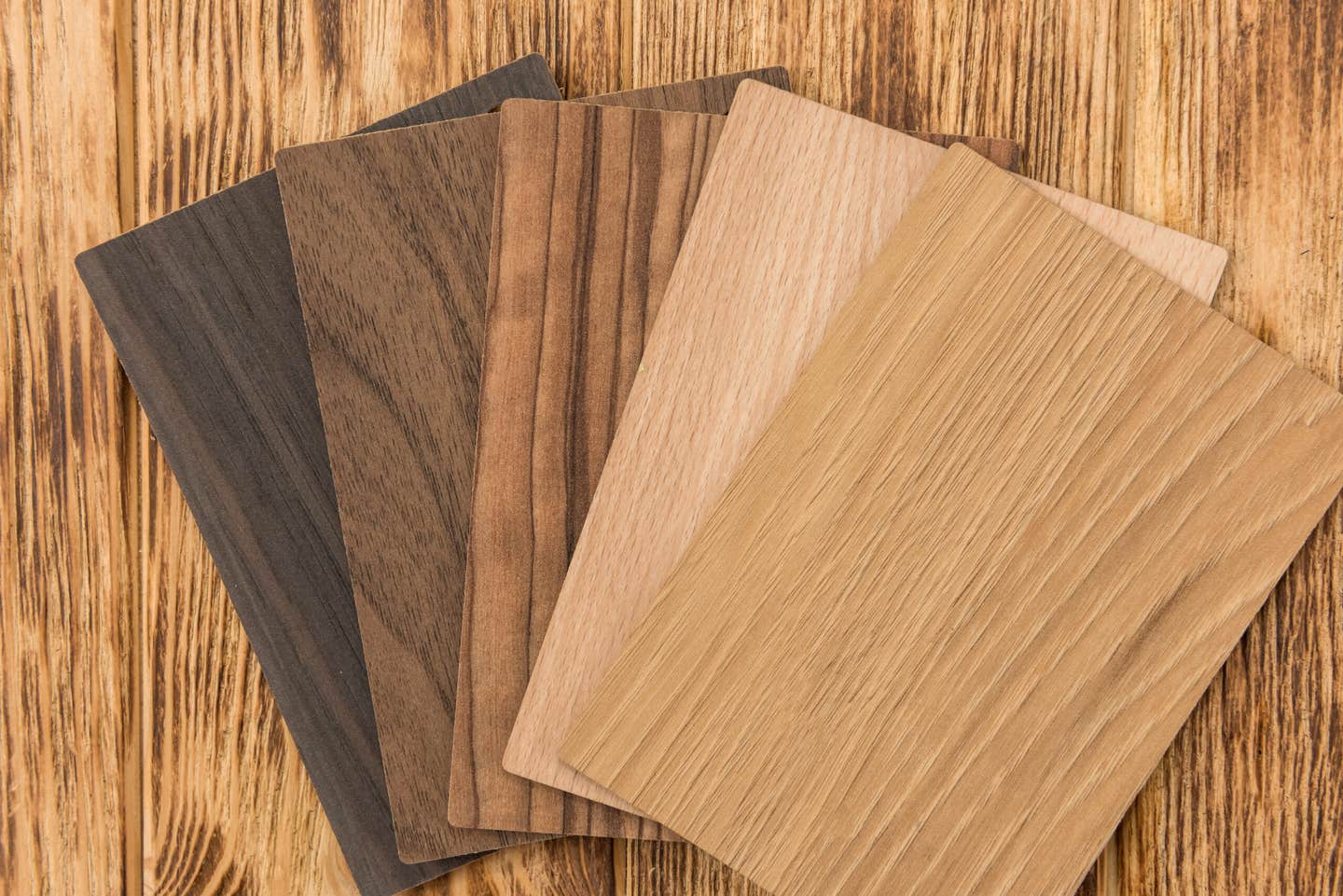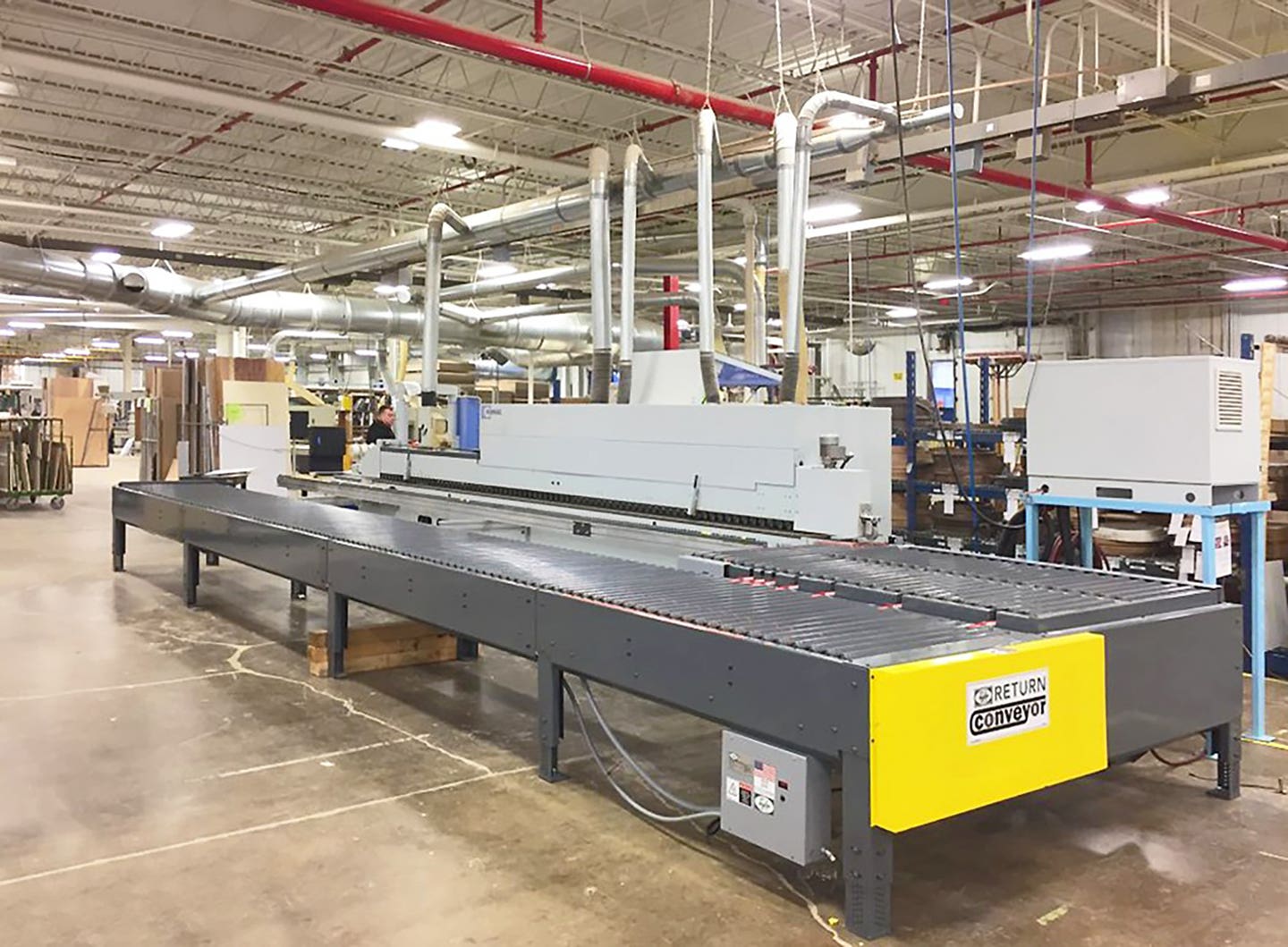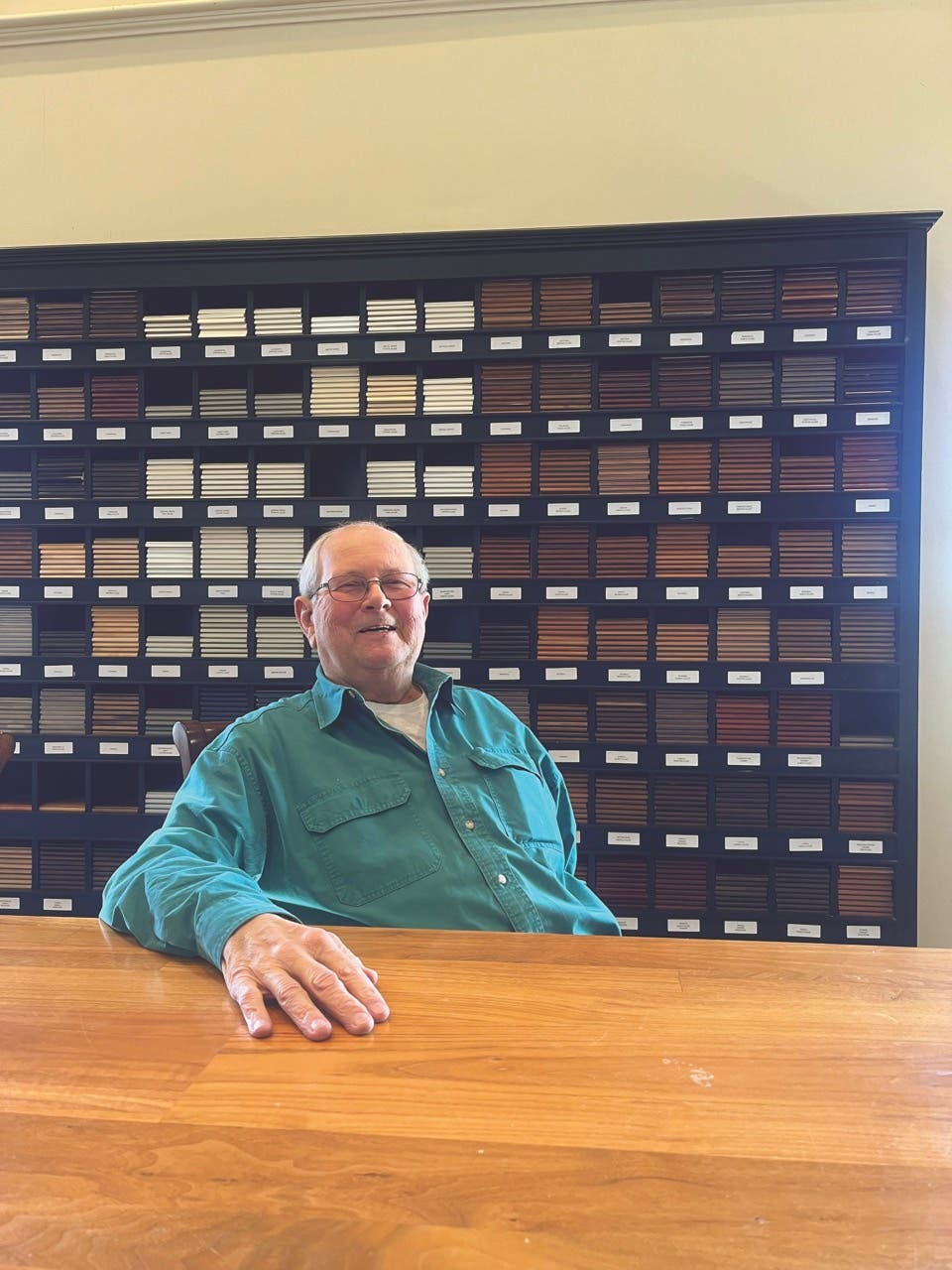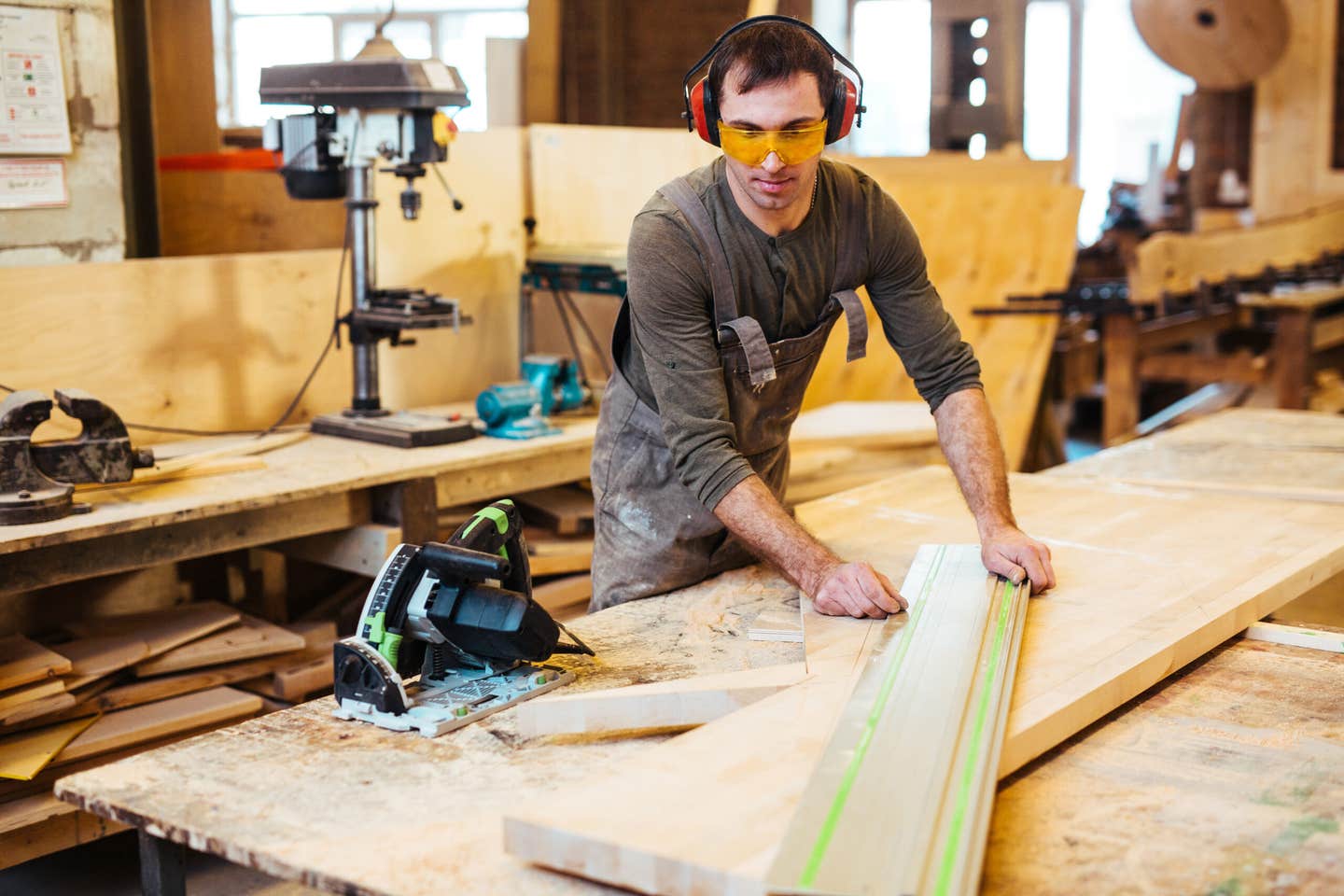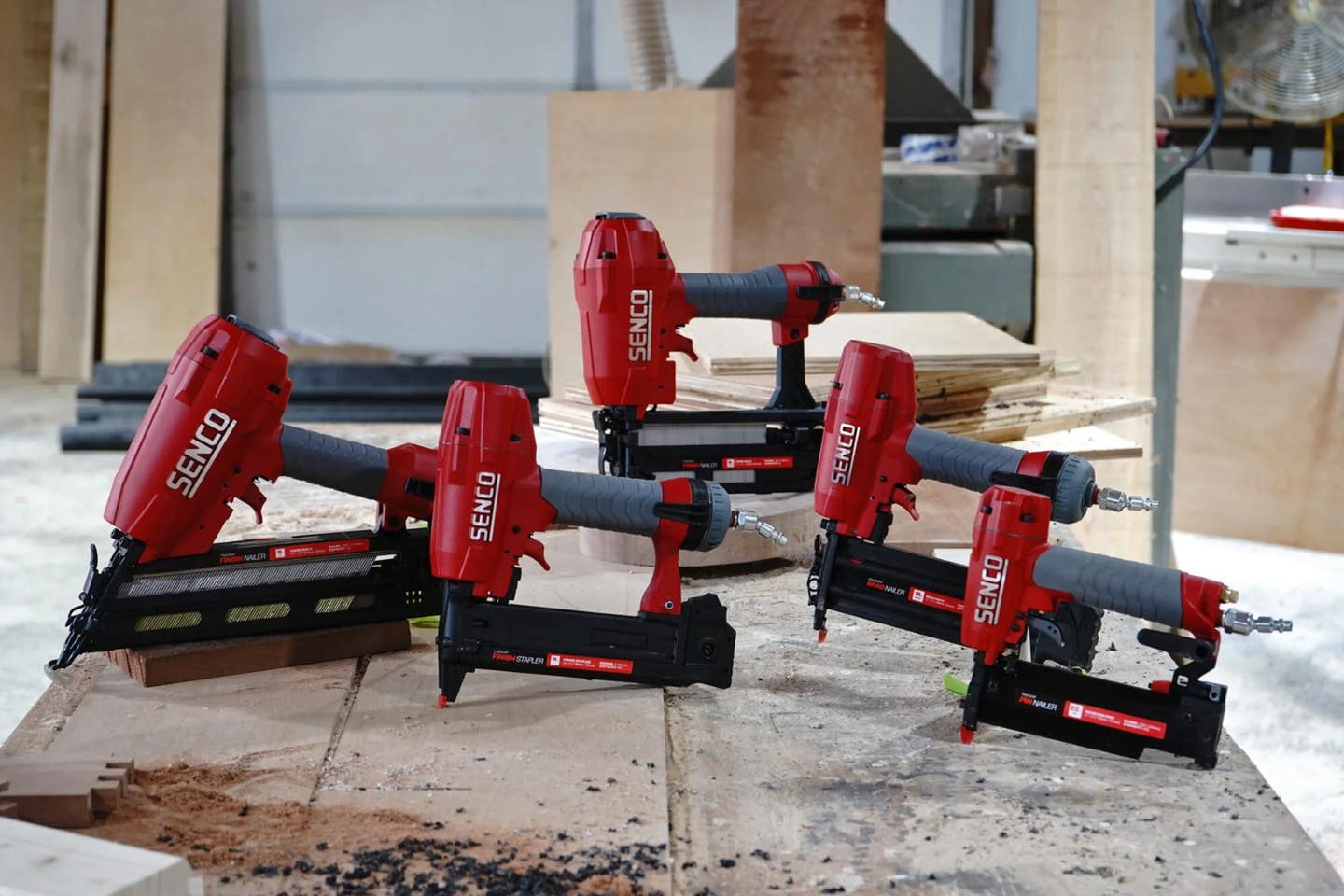The long and winding road
From the Midwest to Mid-Atlantic and now the Northeast, Michael Costerisan has finally found fulfillment It’s not often that an accomplished custom furniture maker has a true second talent. Michael…
From the Midwest to Mid-Atlantic and now the Northeast, Michael Costerisan has finally found fulfillment
It’s not often that an accomplished custom furniture maker has a true second talent. Michael Costerisan of West Stockbridge, Mass., who has been building high-end furniture since 1971, has also found pleasure in airbrush painting. But don’t be mistaken at all — his true flair for the arts is as a custom furniture maker, and nearly all of his pieces emanate from commissions derived from his original designs.
Although it may sound foreign to many woodworkers, Costerisan was clearly aware by the time he was a junior high school student where his life was headed. He was destined to be a furniture maker. That’s it. Story over. Well, almost over. There are a few omissions. Heck, he has been building custom furniture for 38 years.
Early days
Costerisan grew up in Wisconsin and graduated from the University of Wisconsin in Madison with a degree in psychology. Along his academic journey, he encountered an instructor who was also a furniture maker and that eventually brought out his strong interest in art.
“Even though I majored in psychology, I took a lot of courses in art, including woodworking. We had an excellent furniture maker for a teacher, and he taught woodworking from an art point of view,” he says.
Costerisan also had a side job, admittedly a bit odd, beginning in his early teenage years.
“I worked for a taxidermist all through my school years, from the fifth grade all the way through college,” he says. “He was an excellent craftsman and he sculpted in wood just as a hobby, making wood plaques. A lot of what I got from that was being able to observe self-employment and how that was a possibility because the town I grew up in had a General Motors assembly plant.”
Heading south
Following college, Costerisan immediately headed to Maryland and began building furniture. After a couple years, he moved to West Virginia.
“I moved to Western Maryland and started woodworking right out of college,” he says. “I would go to craft shows, started building that up. I had very few tools; I would actually tear down old barns, take some of the beautiful old wood, cut it out with a Skilsaw and actually nail the stuff together ... it would be curves and sculpted shapes.”
He began building stack-laminated rocking chairs, kind of in the ilk of Wendell Castle, but with only three or four layers.
“I made a lot of rocking chairs by splitting wagon wheels in half; they would actually be the rockers. I used a lot of chestnut when I was in Maryland and West Virginia. I would get firewood permits to go into the national forests or state forests and cut down chestnut trees — they never rot — and if they were still standing, fallen or leaning, that was even better.”
Instead of the usual wooden seats, Costerisan’s rockers had pigskin leather seats, with a sling seat in the back, secured with carpet tacks. He liked things that were very crude, very rough, and hammered together. And he sold every piece he ever made.
When he first started out in Maryland, he also worked part-time for a contractor to make ends meet. But after nearly two years, he moved to West Virginia and woodworking became a full-time career.
Mountaineer state
Costerisan worked for about 10 years in West Virginia (1972-1982), and refined his skills during the period. He shifted away from working with reclaimed wood, started using species such as cherry and walnut, and did his own finishing. Business was consistent and, thankfully, busy.
“In West Virginia, walnut and cherry were running 75 cents a board foot; I wasn’t using barn lumber anymore; finishing with tung oil and linseed oil.”
His main product continued to be rocking chairs, but he also built desks, dining tables, some bedroom furniture and a limited amount of kitchens.
“My confidence in being able to succeed in business took quite awhile,” he reflects. “I struggled in West Virginia financially; just getting by, and we were more or less in a back-to-the-land [existence]. I was always a one-man shop; I only got help when I moved things.
“People liked my stuff even though it wasn’t as perfect as other people’s stuff. But now I’ve gotten to a point where my work is more and more refined, and that happened long ago. I’m up to 38, 39 years in the business, so I can pretty much do anything. I’m still working and I have plenty of business.”
Before he headed to the Berkshires in Western Massachusetts in 1982, Costerisan experienced a woodworker’s nightmare. Fortunately, he was prepared when the unthinkable happened.
“My shop in West Virginia was struck by lightning and burned down; all my tools were wrecked. I did have insurance and had just made my first payment. I went out and bought a set of 1952 Craftsman tools from this guy who was in the Korean War.”
Northbound
When Costerisan moved to Massachusetts, the change in scenery also proved to bring about a precipitous adjustment to his career. He immediately was hired to build the cabinetry and staircases for a large house in nearby Lenox, Mass., which took him nearly a year to complete. He has remained busy ever since.
He has never advertised. He hasn’t exhibited at a craft show since 1972 and steers clear of furniture shows.
“It’s one thing if you are a jeweler or a candlemaker who can sit there and make stuff while you’re selling, but it just takes so much time. People do it and I know people who do it. I do belong to the Berkshire Woodworkers Guild and we do a show every year. Here or there, I’ve done stuff for an interior decorator or an architect. I guess I’m strictly word of mouth.”
Ventfort Hall
During the last 10 years, Costerisan has been fortunate to have a custom job that any woodworker would dream to have. Ventfort Hall, a historic mansion in Lenox, filled with beautiful mahogany and oak woodworking, was destroyed out of spite by its owner. Slowly, room by room, Costerisan has helped put the building back together.
“People in town didn’t want it torn down so [the owner] destroyed the place,” recalls Costerisan. “The town eventually got an injunction to take the place back. But, meanwhile, every room was reduced to rubble — a beautiful mahogany library, columns, bookcases, all torn down and smashed into the middle of the room. It’s like a bomb hit the place. It wasn’t even in the category of restoration; I don’t know what you would call it. So that has been, over the last 10 years, a huge project. During 2008, I took almost the full year to rebuild the library and put it back the way it was. I had to recarve everything that was carved, remake any moldings … very fancy woodworking. I was working off photos and broken pieces; just puzzle work. Eventually it was a process of elimination.”
Costerisan has a couple “semi-big projects” left to do at Ventfort Hall, basically because he is the only one either willing or able to do it. But he admits that the work is “daunting, amazingly daunting.”
The library job at Ventfort Hall wrapped up in late winter, and he became a little concerned because he had removed himself from the market for more than a year. But just when self-doubt may have set in, he found himself immediately on the receiving end of four jobs.
“It was amazing,” he says. “The real answer for me has to do with being confident and being in the business for long enough to know that — and this is the part you and your readers may not like because I am a very New Age person — I have a fairly typical evolutionary path of someone who is from the ’60s. I started out as a hippie, I go back to West Virginia where I was a land person, and moved up here and became [involved] in a yoga center.
“My answer for all the people who are interested in New Age philosophy is that the universe supplies you with what you are. I am a woodworker and I work for a living and so that will be supplied to me. So when I advertise, I advertise to the entire universe; that’s how you can get a job in Chicago when you live in Massachusetts. It’s true. Once I put out that beam of energy that I am ready to do something, it comes back. I just trust that you fit into a puzzle in the world.”
Customer relations
Costerisan is not a CAD person when it comes to design — he finds it tedious and time-consuming. He prefers to do a scaled sketch, using nothing more than a drawing board and a T-square.
“Design is almost always working with the customer, start from function, of course, go to style; I do whatever anybody wants,” he states. “I don’t do traditional highboys, secretaries, I don’t want to do ball and claw. When it comes to money, what I like to build — and I think a lot of people are in this category — is casework, because it is big and it brings in a lot of money.
“I’ll sketch what [the client] wants, dimension it and function it, and talk about the style. Sometimes they bring pictures in a magazine, and that’s good, actually. Here and there they have a decorator, someone who has actually drawn something … and then I bid it. I figure out what it will cost me to do it, what type of wood they want and everything.”
His latest project was a wine cellar, which required 1,800 lineal feet of 5/4" x 6" red meranti.
“It was a big job. Every bottle of wine has a little compartment that it slides into. When I was done with that wine cellar I was short by a 16" x 4" piece. It’s not that I’m that great of an estimator, but I figured that job a dozen times and kept telling myself that this is way too much wood. I used every bit of it.”
On deck
Costerisan would like to learn more about carving. He says he is more of a sculptor at this point, building bigger, broader and more flowing pieces as opposed to producing period reproductions.
“Art Nouveau is good for that because if I chip something the wrong way, well, now that curve goes there instead of where it was going to go, and that’s OK. I don’t have a big set of chisels, I probably only have 20 or so. The people at the turn of the century who built places like Ventfort Hall had maybe 300 chisels in their set.
“There’s a thing about woodworking that sort of becomes real for me. No matter what the project is, I’m sawing, sanding, planing or just carrying wood around. And there is a definite creative energy to it.” n
Contact: Michael Costerisan, 17 Cone Hill Road, West Stockbridge, MA 01266. Tel: 413-232-7937. www.michaelcosterisan.com
This article originally appeared in the July 2009 issue.


